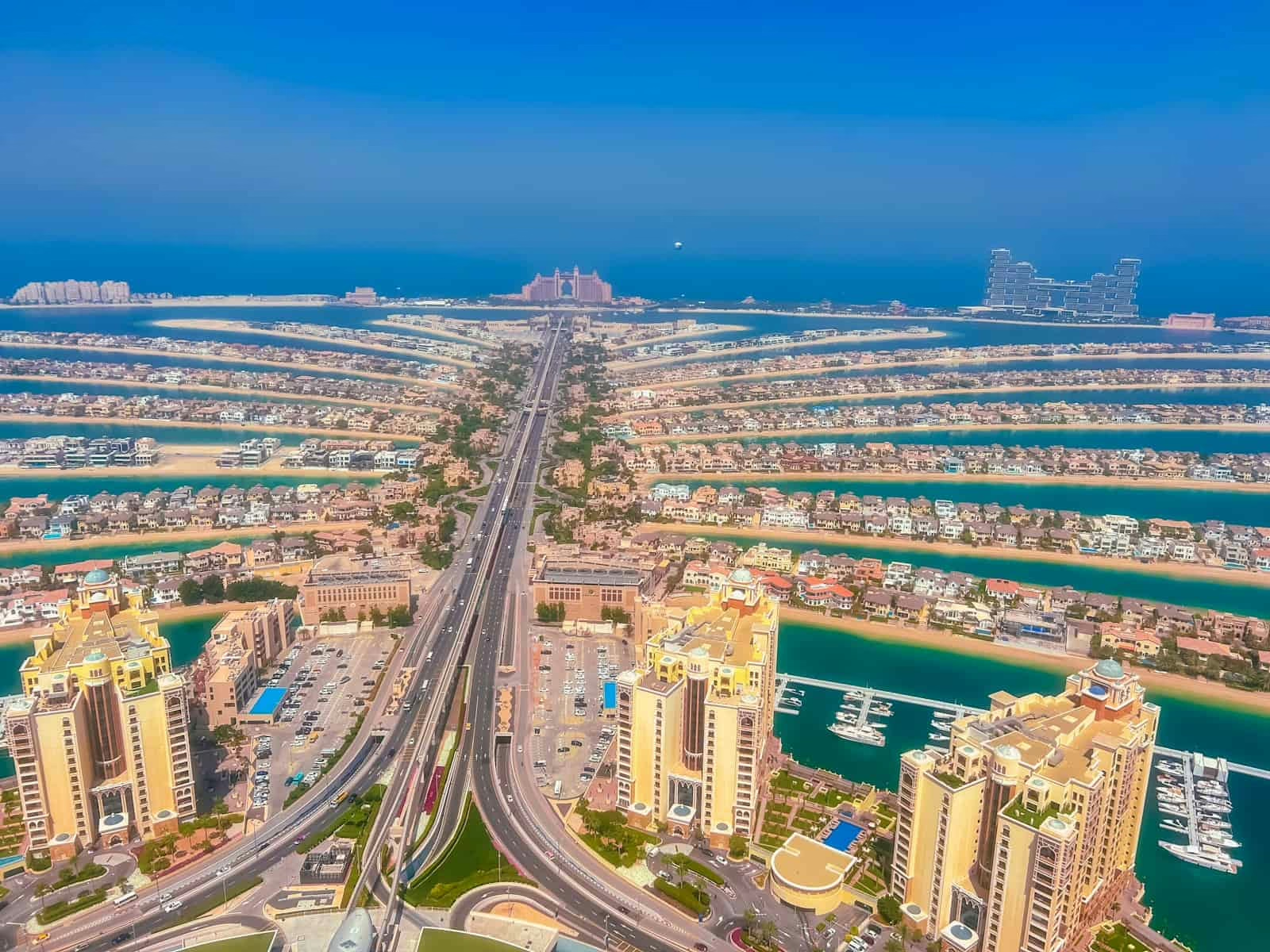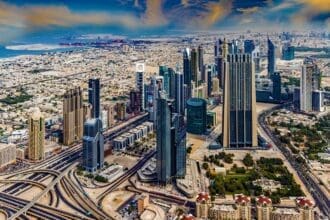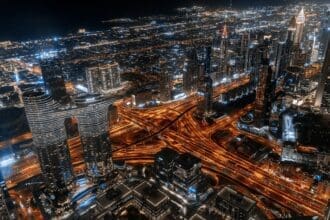Contents
Owning a property on Palm Jumeirah is the ultimate symbol of success in Dubai. The view of the palm “leaves”, turquoise water and the skyline of Dubai Marina is a dream for millions. But behind this postcard-perfect location lie specific and growing risks that any potential investor must analyse. Before you make your investment in Dubai, let’s look beyond the glamour and appreciate the real challenges.
An engineering miracle against the forces of nature
The Palm Jumeirah is a triumph of human ambition – an artificial island built from millions of tons of sand and stones won from the sea. But this foundation also makes it vulnerable. Ever since its creation, there have been scientific debates about processes such as subsidence – the natural compaction and sinking of loose material.
The main protection of the island is the 11-kilometer outer breakwater. It is designed to absorb the pounding of the waves and maintain calm waters around the “leaves”. However, this protection requires constant and extremely expensive maintenance. Erosion is an ongoing process and huge investments are needed every year to strengthen the breakwater and restore the sand on the beaches. For property owners, this is not just an interesting fact, but a direct financial commitment.
Risk #1: Invisible Costs – Service Charges
This is probably the most underestimated risk by buyers. Fantastic views and luxurious common areas come with a high price tag called “service charges”. In the Palm complexes, these charges are among the highest in Dubai and cover much more than cleaning and security.
What do you actually pay?
- Cooling (Chiller Fees): the cost of air conditioning the common areas is huge.
- Beach and pool maintenance: constant cleaning, lifeguards, maintenance of sunbeds and umbrellas.
- Landscaping: Maintaining palm trees and gardens in a desert climate requires an enormous amount of water and labour.
- Infrastructure: and most importantly – shoreline and breakwater maintenance. Part of the cost of this large-scale activity is shared between the owners.
With climate change, stronger storms and rising sea levels will require increasingly serious and expensive protection measures. This means only one thing: maintenance fees will continue to rise. An investor who did not anticipate this growth could see his net rental yield melt away over the years.
Risk #2: The time bomb – the future of insurance
Currently, most of the Palm properties are insured. But insurance companies around the world are reassessing the risks associated with climate change. The unthinkable until recently flooding in Dubai in April 2024 was a “wake-up call” for the industry.
The future risks are clear:
- Raising premiums: insurers will start calculating the higher risk of flooding and storm damage, which will make policies for waterfront properties significantly more expensive.
- Higher deductible: Even with coverage, the company may require the owner to assume a higher share of the damages.
- Refusal to insure: In a worst-case scenario, insurers may in the future refuse to cover properties in the most vulnerable areas altogether, which would turn them into a toxic and illiquid asset.
Risk #3: Extreme events are not the exception, but the new norm
The heavy rains and subsequent flooding in April 2024 exposed weaknesses in the drainage system of even the most luxurious locations such as Palm Jumeirah. Luxury car owners found themselves stranded in underground garages, and access to many villas and buildings was hampered for days.
These events, while rare, are becoming more frequent. They show that even the best-planned infrastructure has its limits. For the investor, this means the risk of direct damage to the property (especially for ground floor villas and apartments) and temporary loss of rental income if the property becomes uninhabitable or unaffordable.
The Smart Investor’s Guide to Palm Jumeirah
Does all this mean you should avoid the Palm? No, but it does mean that you should approach with extreme caution.
- Check fee history: before purchase, request a maintenance fee report for the last 3-5 years to see the upward trend.
- Choose the right floor: The risk of direct flooding for a high floor apartment is zero, unlike a luxury beach villa.
- Research the builder: the reputation of the builder and management company is key. Some handle maintenance much better than others.
- Read the insurance with a magnifying glass: hire a consultant to analyse in detail exactly what the insurance policy covers.
- Think of an exit strategy: ask yourself not only if you can buy, but also if you’ll be able to easily sell that property in 10 years, when those risks will be even more apparent.
Investment in Dubai and the Palm Jumeirah in particular continues to be attractive, but the game is changing. Success is no longer measured in views and luxury alone, but in an informed assessment of long-term risks.
You might also like:
- Dubai 2040: The Complete Guide to the Future of the Emirate’s Property Market
- How to Choose a Reliable Property Management Company in Dubai: A Complete Investor’s Guide
- Freehold vs. Leasehold in Dubai: What Every Investor Needs to Know
This post is also available in: Български







